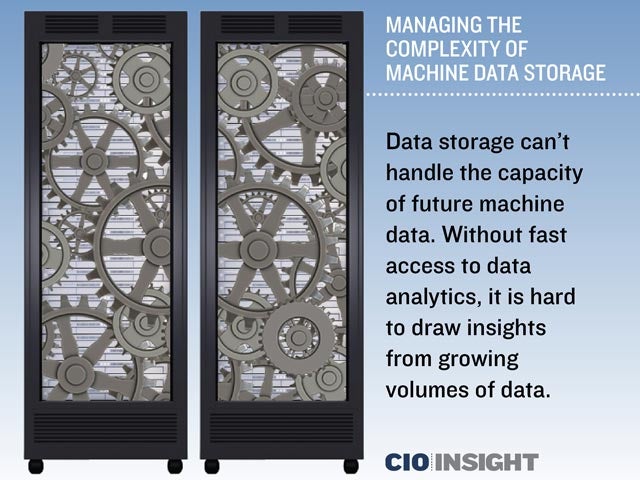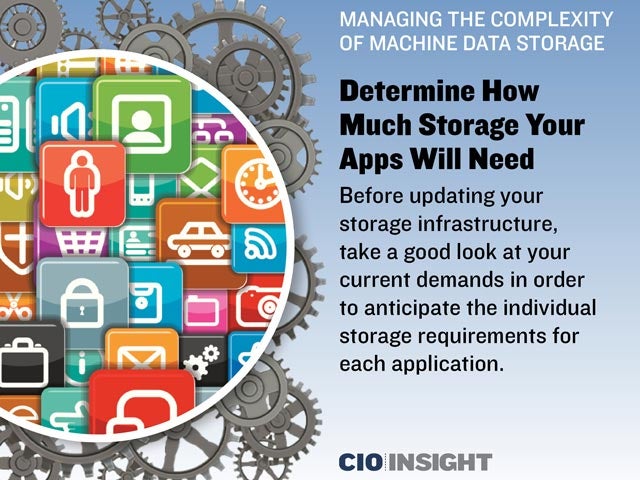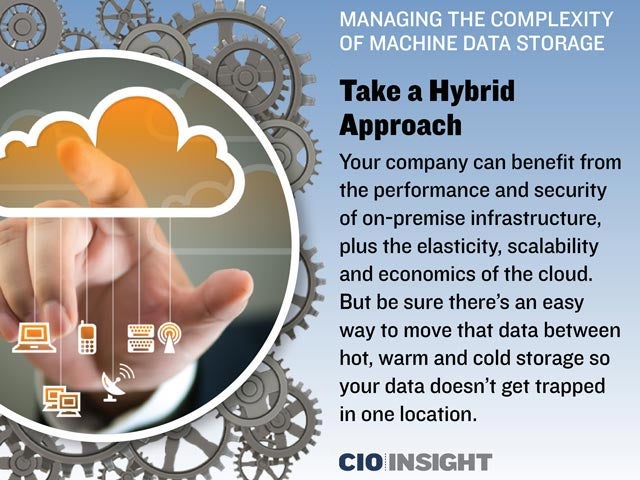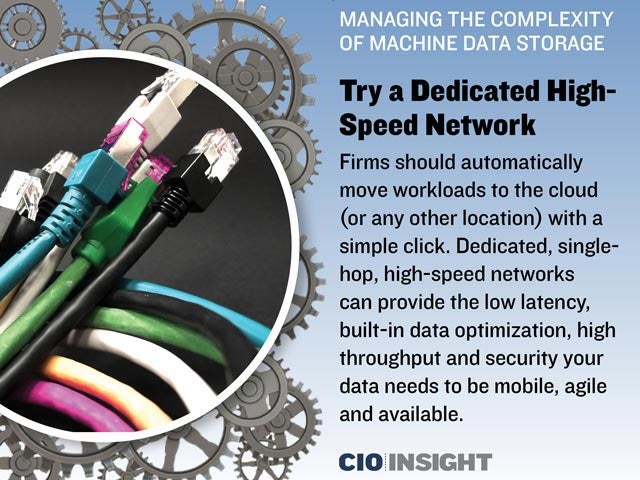
Managing the Complexity of Machine Data Storage
 Managing the Complexity of Machine Data Storage
Managing the Complexity of Machine Data Storage
Data storage can’t handle the capacity of future machine data. Without fast access to data analytics, it is hard to draw insights from growing volumes of data.
 Determine How Much Storage Your Apps Will Need
Determine How Much Storage Your Apps Will Need
Before updating your storage infrastructure, take a good look at your current demands in order to anticipate the individual storage requirements for each application.
 Put Your IT Budget Into Perspective
Put Your IT Budget Into Perspective
What did you spend on storage last year? Did costs increase or decrease? How much of that spending supports machine data storage? Knowing how storage and machine data costs have affected IT spending over time can help set limits for current projects.
 Consider the Storage Impact of Machine Data Analytics
Consider the Storage Impact of Machine Data Analytics
More than 50% of investments in analytics applications are spent on storage to support the platform. If you can’t balance machine data demands with its projected growth, it will be hard to identify the true total cost of ownership.
 Consider New Investments in Old-School Hardware
Consider New Investments in Old-School Hardware
Storage hardware faces a serious challenge when scaled to support machine data growth. Leveraging the cloud and pay-as-you-grow models can open new doors—if you find a winning hybrid strategy tailored for your machine data.
 Evaluate Public Cloud Services for Scalability
Evaluate Public Cloud Services for Scalability
Moving some machine data to a public cloud can deliver flexibility and scalability, enabling you to increase and decrease storage capacity as needed. Since not all applications are suited for the cloud, determine which will apps thrive and which will fall flat.
 Take a Hybrid Approach
Take a Hybrid Approach
Your company can benefit from the performance and security of on-premise infrastructure, plus the elasticity, scalability and economics of the cloud. But be sure there’s an easy way to move that data between hot, warm and cold storage so your data doesn’t get trapped in one location.
 Don’t Settle for a Quick Fix
Don’t Settle for a Quick Fix
Migrating machine data to the cloud can involve complex application rewrites, more high-bandwidth connectivity or the shipment of storage devices to cloud-connected data centers. Don’t settle for a quick fix when none of these make cloud adoption less complicated or more economical.
 Try a Dedicated High-Speed Network
Try a Dedicated High-Speed Network
Firms should automatically move workloads to the cloud (or any other location) with a simple click. Dedicated, single-hop, high-speed networks can provide the low latency, built-in data optimization, high throughput and security your data needs to be mobile, agile and available.
 Gain an Advantage With Edge Computing
Gain an Advantage With Edge Computing
Enterprises are moving data to the edge of their networks by leveraging metro-based data centers using tactics originally developed by content delivery networks. The result: Companies can realize the elasticity and economics of the cloud, plus the low latency and high availability of on-premise.
 Partner With a Managed Services Provider
Partner With a Managed Services Provider
Most IT budgets can’t cover an entire in-house storage management team, so an MSP may be able to deliver the resources your team needs, such as dedicated network access, edge computing tactics and hybrid cloud strategies.